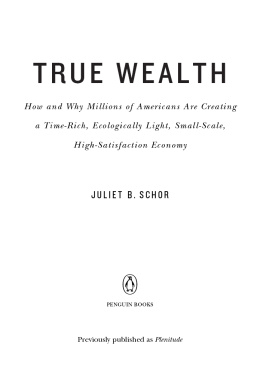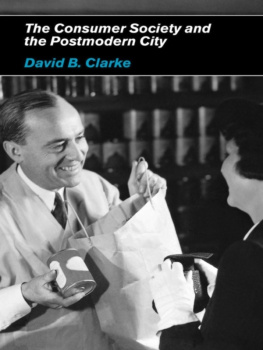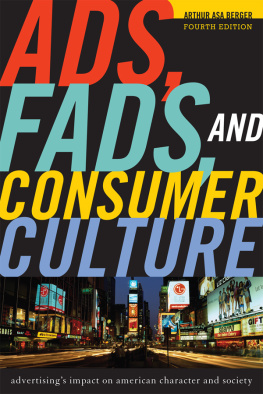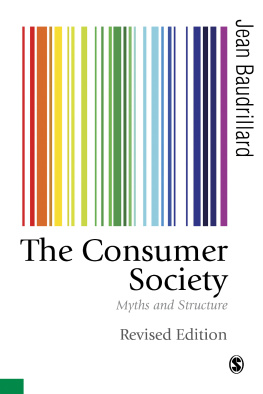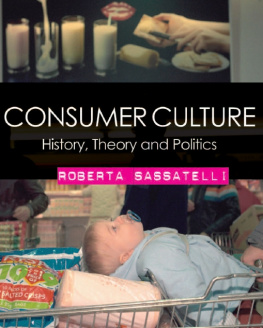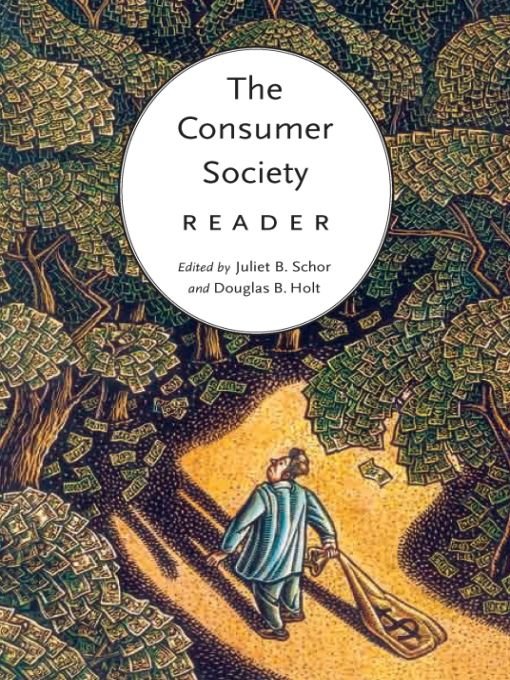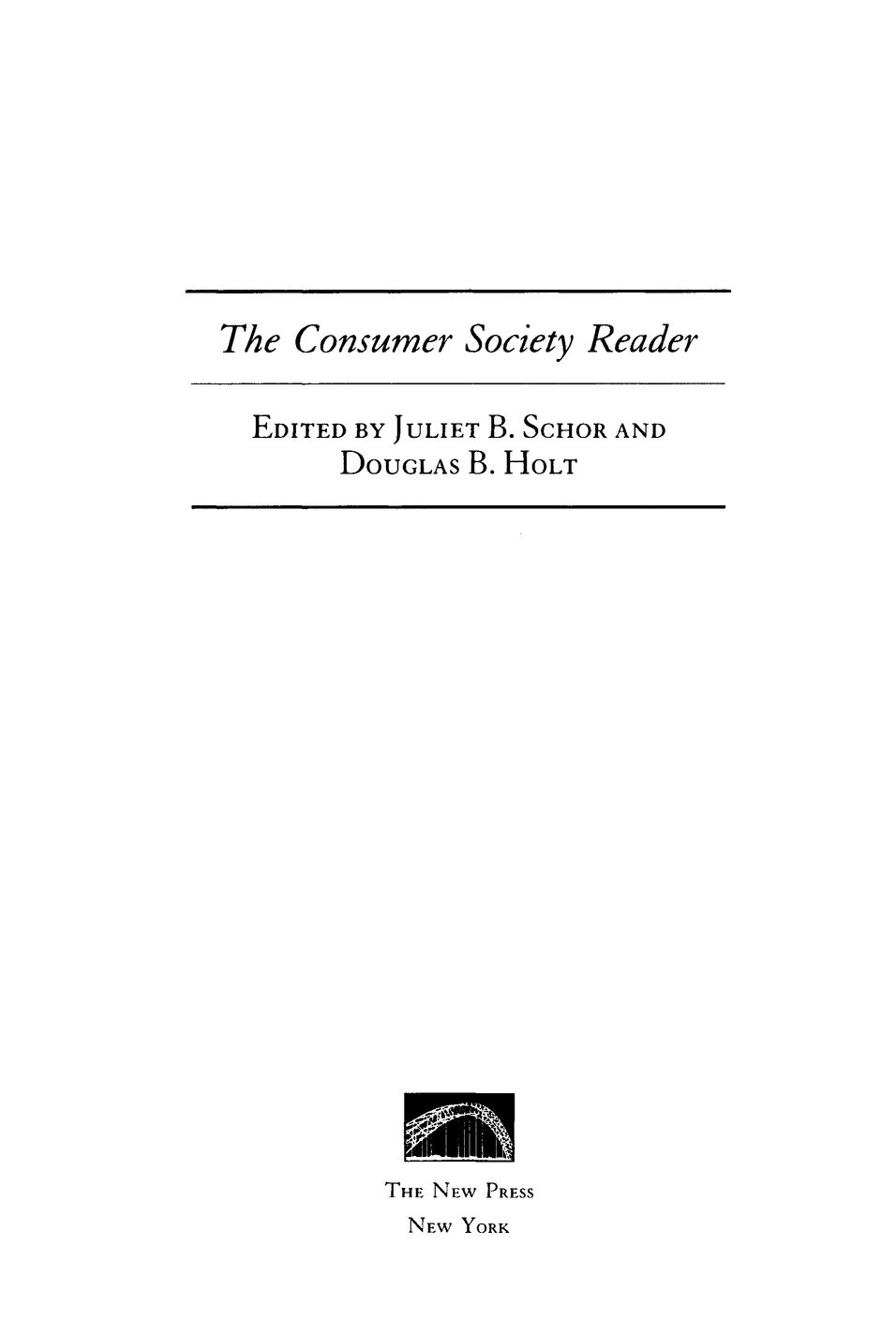Table of Contents
ACKNOWLEDGMENTS
We would like to thank a number of people who helped us along the way: Diane Wachtell, who originally suggested the idea of an anthology; Gerry McCauley, our wonderful agent; Matt Weiland, our editor, and Tim Roberts, our production editor, both at The New Press; Susan Bordo, Robert Goldman, and Tom OGuinn, who provided photos for us; Elisheva Lambert and Jim McNeill, who provided dedicated research assistance; Eric Hall, who secured permissions; and Prosannun Parthas-arathi and Tuba stner. We are especially grateful to those publishers and authors who allowed us to reprint their work free of charge or at reduced rates.
INTRODUCTION
DO AMERICANS CONSUME TOO MUCH?
Douglas B. Holt and Juliet B. Schor
Global warming, the conspicuous spending of the newly wealthy, excessive advertising, and, most recently, the Battle of Seattle have all conspired to put the question of our consumer lives back into public view. Consumer societythe air we breathe, as George Orwell has described itdisappears during economic downturns and political crises. It becomes visible again when prosperity seems secure, cultural transformation is too rapid, or environmental disasters occur. Such is the time in which we now find ourselves. As the roads clog with gas-guzzling SUVs and McMansions proliferate in the suburbs, the nation is once again asking fundamental questions about lifestyle. Has luxury fever, to use Robert Franks phrase, gotten out of hand? Are we really comfortable with the Brand Is Me mentality? Have we gone too far in pursuit of the almighty dollar, to the detriment of our families, communities, and natural environment? Even politicians, ordinarily impermeable to questions about consumerism, are voicing doubts. A year ago, Hillary Clinton got the attention of the world by worrying that the export of American entertainment and consumer products was destroying indigenous cultures; and recently, Vice President Al Gore suggested that Americans should focus less on earning money and spend more time with their families. Polls suggest majorities of Americans feel the country has become too materialistic, too focused on getting and spending, and increasingly removed from long-standing nonmaterialist values.
Why are doubts about consumer society reemerging at the end of the twentieth century? Three factors have combined to create the current disquiet. Perhaps most obvious is the new inequalitythe top 1 percent of households now own about 40 percent of all wealth, and the top 20 percent are responsible for half the countrys consumer spending. The long boom of the 1990s has resulted in a dazzling display among the nations newly rich to outdo one another in ostentatious spending. Each twist and turn of this Veblen-esque competition is duly reported on by the national media, whether its thousand-dollar bedsheets, ten-thousand-square-foot homes, or hundred thousand dollar vehicles. The entire nation becomes privy to the ins and outs of hiring butlers and erecting stone walls. The onlookers are alternately attracted and repelled, disliking the values driving the conspicuous consumption but at the same time fearful of falling too far behind in this accelerated race. Households of ordinary means console themselves with affordable luxuries, but all is not well in the kingdom of plastics.
On the one hand, the sheer disparities of wealth, income, and situation grow harder to justify, particularly as prosperity feels more assured. Homelessness, hunger, and child poverty continue to nag at Americans consciences. Furthermore, the upscaling of the wealthy puts pressure on others to follow suit. Many households find themselves stretched thin, as incomes for the majority have not kept pace with rising consumer standards. Savings rates have fallen, while credit card debt and bankruptcies have skyrocketed. Not only money but also time is in short supply. As lifestyle norms require two earners, and jobs become increasingly demanding, time for family and community is squeezed. The acceleration of daily life, often for purposes of consuming, contributes to a feeling that things are out of control. People look back to an earlier era when there was time enough, even if living standards were less opulent. Many long for a simpler, more authentic, less materialist past. Balance has become a defining mantra.
The second trend is the relentless commodification of all areas of social life, and the rise of market values. Perhaps the most striking aspect of this trend is the marketization of a wide variety of goods and services that had hitherto been outside the profit nexus. Most prominent among these are the services produced in the household economy, where self-provision had been the norm. Today, as married women are more devoted to paid employment, they begin outsourcinghiring baby-sitters, accountants, gardeners, grocery delivery, and personal shoppers. Households that can afford it substitute time for money. Less and less of daily life is produced at home; more and more of what we consume is commodified, i.e., produced for sale on the market.
This commodification of daily life is also occurring in other areas. Health care and education, which were previously provided as public goods to citizens, are given over to private corporations who produce them for profit, as if they were ordinary consumer goods. Public services such as welfare and prisons are run by corporations for the purpose of making money.
The production of news, culture, sports, and entertainment is also increasingly commodified. Twenty-five years ago, the public good aspect of book and newspaper publishing coexisted with the need to make money. Now, a handful of megaconglomerates have taken over all the major media. Profitability and reproducing the political legitimacy of the system have become the dominant criteria for cultural production. The mouse is truly eating the world.
Indeed, virtually no aspect of social life appears to be immune from these trends. Personal style is now a hot market commodity. Trend spotters scour the nations inner cities, searching for the successors to the hip-hop innovators of the 1980s. They scrutinize the walk, the talk, the way ones pants are worn. At lightning speed, style moves from inner city to suburb and back again, a marketed commodity. But its not just youth culture that is being replicated and sold. Business gurus urge everyone to perfect their personal style. Brand and market yourself, whomever you are.
The relentless drive to commodify is also evident in the commercialization of public space and culture. Advertising and marketing appear almost everywherein museums, on public television and radio, in doctors offices, on subway platforms, and on restaurant menus. Sports arenas, previously named for communities, now sport corporate logos. Movies are replete with product placements. Public schools, once relatively isolated from corporate advertisers, became their new frontier during the 1990s, as marketers strived for share of mind among six-year-olds. Many of the nations children now watch commercials in their classrooms (via Channel One), learn from corporate-written curricula, look at advertising on the Internet, or drink the official school soft drink (Coke or Pepsi).
Indeed, our deepest personal connections are increasingly dominated by market transactions, whether its through surrogate motherhood, the sale of ones DNA, the booming trade in sex for hire, or the commercialization of religion and spirituality. Little remains sacred, and separate from the world of the commodity. As a result people become ever more desperate to sacralize the profane consumer world around them, worshiping celebrities, collections, and brand logos.


